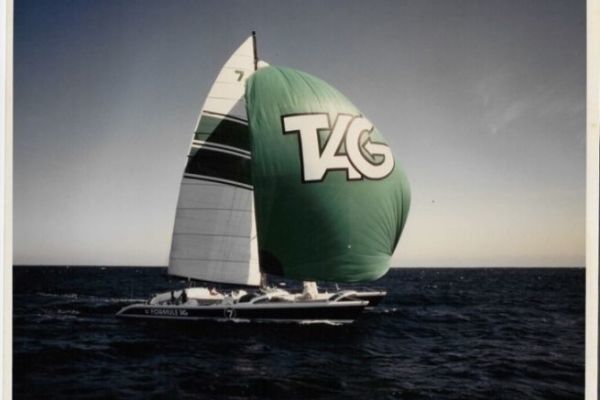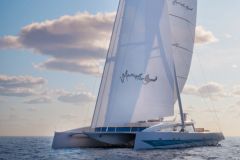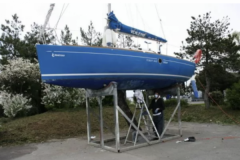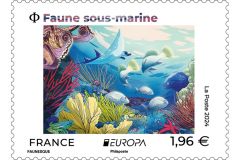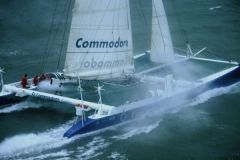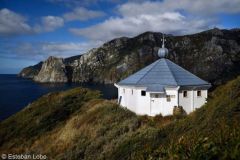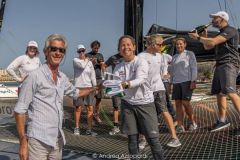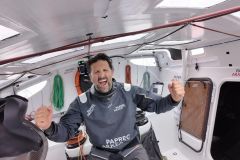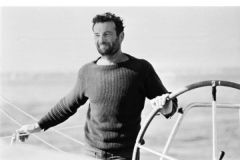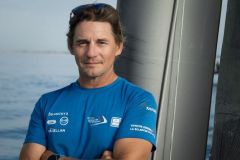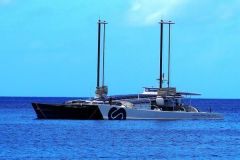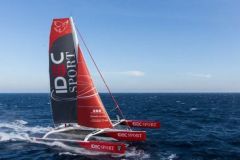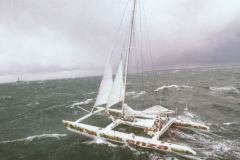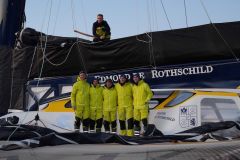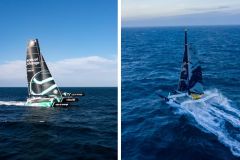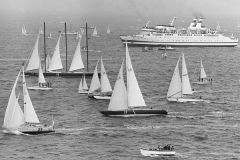The largest racing catamaran in 1980
Born in 1983 under the name Formule Tag, the catamaran, now Energy Observer, was built in Quebec for Canadian Mike Birch. This 80-foot Nigel Irens design was, at the time, the largest racing catamaran in the world. Built in Kevlar on Airex foam and carbon, she is 24 m long, weighs less than 10 tons and has a sail area of 440 m2. On board, Mike Birch set the 24-hour sailing distance record in 1984, sailing 512.5 miles.
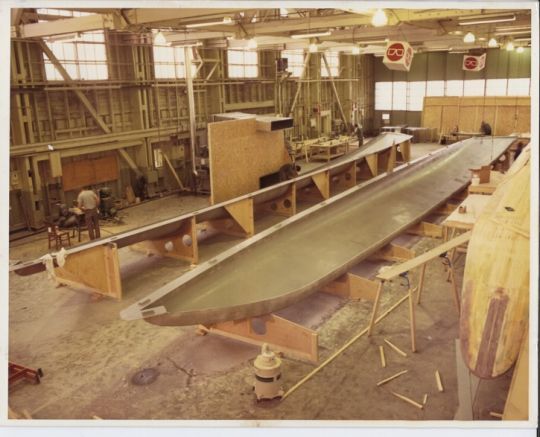
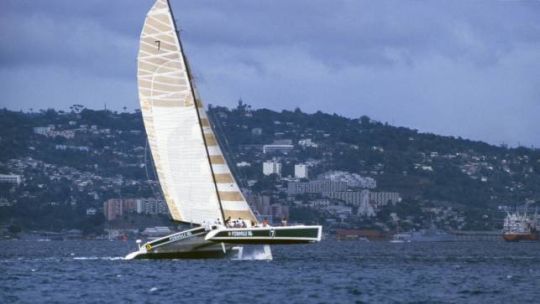
Winner of the 1994 Jules Verne Trophy
The multihull was bought by Robin Knox-Johnston and Peter Blake in 1993. Renamed Enza New Zealand, the boat was lengthened to 25.90 m. On board, the two sailors set out to beat the Jules Verne Trophy to become the fastest sailors around the world. Setting off on January 30, 1993, they were forced to abandon after colliding with an ONFI south of Cape Town, South Africa. Thanks to the sponsor, the boat is now under construction, and is lengthened by a further 3m to 28m. It was also fitted with a central living area. The two skippers tried again in 1994, setting a new record of 74 days, 22 hours, 17 minutes and 22 seconds, at an average speed of 14.68 knots, after a fierce duel with Olivier de Kersauson's trimaran.
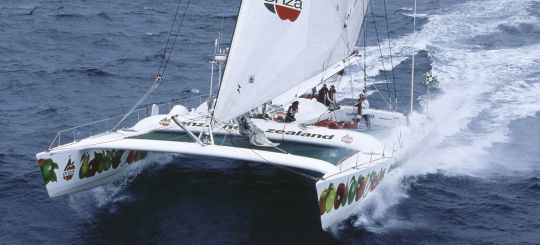
In 1997, British sailor Tracy Edwards bought the boat to take part in the Jules Verne Trophy. She assembled a 100% women's crew on the catamaran, renamed Royal & SunAlliance. She breaks the women's record for the North Atlantic Ocean in 9 days, 11 hours, 21 minutes and 55 seconds, before attempting to break the round-the-world record. She dismasted after 43 days at sea.
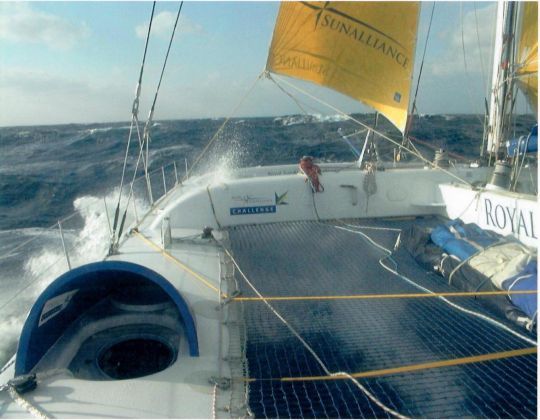
The end of his ocean racing career in 2006
Her ocean racing career came to an end at the hands of Tony Bullimore in 2000. Once again, the catamaran, renamed Team Legato, is lengthened to 102 feet - 31 meters - its current length. She also received a new wing mast. The British sailor sets off on The Race, the round-the-world race of the millennium. The yachtsman finished in 5th and last place. In 2005, he took part in the Oryx Quest, a round-the-world race starting and finishing in Qatar. He finished second and last in the overall ranking after more than 60 days at sea. During this race, the navigator set the record for crossing the South Atlantic in 11 days, 10 hours, 22 minutes and 13 seconds. In 2006, the boat was renamed Doha. He attempts to beat the Jules Verne Trophy on board, but has to give up due to mechanical problems.
A new life as an experimental vessel in 2015
After several years of abandonment, the vessel was finally recovered by Victorien Erussard in 2015 to take part in the Energy Observer program. Modified for a 6-year round-the-world voyage, she was grafted with larger hull volumes and a central nacelle molded in racing trimaran shapes, and lost her mast. Its weight increases from 15 to 35 tons. Several architects are involved in this transformation, including Marc Lombard and Marc Van Peteghem.
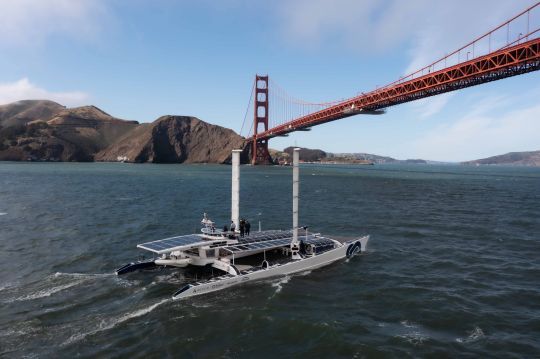
Energy Observer is initially equipped with vertical wind turbines and covered with solar panels. In 2019, it will also be fitted with small automated wings, each measuring 32 m2, developed by Ayro. Numerous innovations are also installed on board, including a hydrogen chain and variable-pitch propellers. By the time it returns in 2022, Energy Explorer will have covered more than 50,000 nautical miles.
